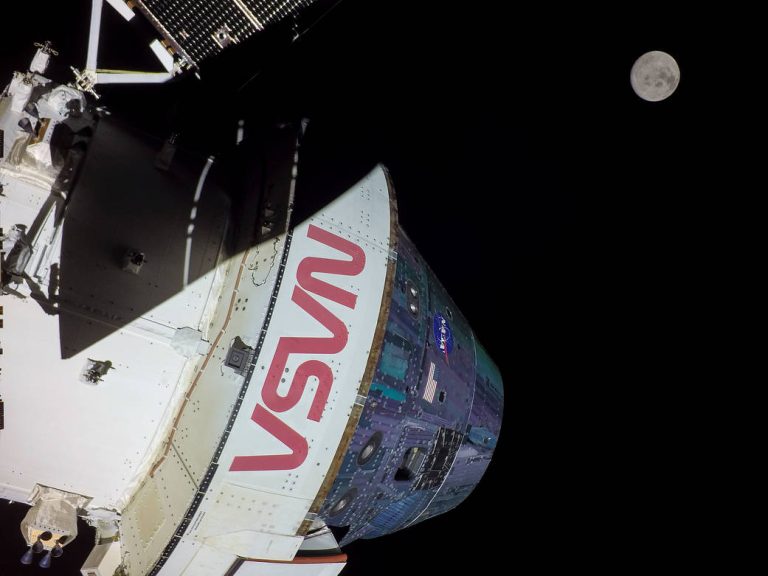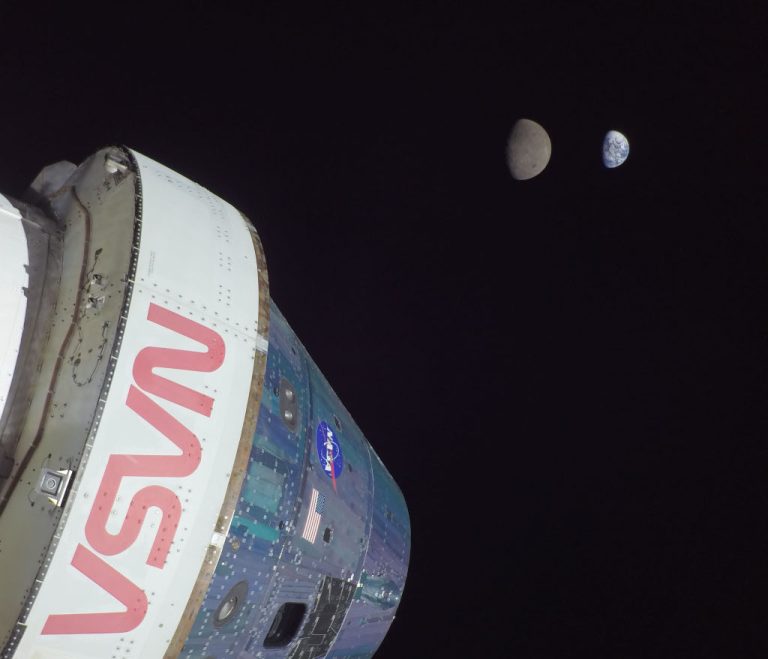返回地球前,猎户座凝视着月亮
On flight day 20 of the Artemis I mission, Dec. 5, 2022, Orion captured the Moon on the day of return powered flyby, the final major engine maneuver of the flight test. The burn, which used the spacecraft’s main engine on the European-built service module, lasted 3 minutes, 27 seconds, and changed the velocity of the spacecraft by about 655 mph (961 feet per second). It also committed the spacecraft to a Dec. 11 splashdown, which will air live on NASA Television, our website, and the NASA app. Follow Orion’s journey by visiting the Artemis I blog. Image Credit: NASA 2022年12月5日,在阿尔忒弥斯1号任务的第20天,猎户座在返回动力飞越的当天拍摄了月球得照片,这是飞行测试的最后一次主要发动机机动。这次点火使用了欧洲制造的服务舱上的航天器主发动机,持续了3分27秒,使航天器的速度改变了约655英里/小时(961英尺/秒)。它还承诺将在12月11日进行航天器溅落,届时将在NASA电视、我们的网站和NASA应用程序上直播。 通过访问阿尔忒弥斯1号博客,关注猎户座的旅程。 图片来源:NASA










